To Sing or not to Sing
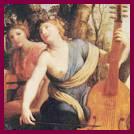 This program presents an ode to the vocal qualities of the recorder. Recorders and harpsichord explore together the vocal and instrumental repertoire of the early Italian baroque. Compositions by: G. Caccini - G. Peri - G. Frescobaldi - P. Mealli e.a.
This program presents an ode to the vocal qualities of the recorder. Recorders and harpsichord explore together the vocal and instrumental repertoire of the early Italian baroque. Compositions by: G. Caccini - G. Peri - G. Frescobaldi - P. Mealli e.a.
The Highly ornate High Baroque
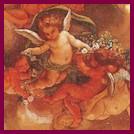 The pomp and grandeur of the baroque rulers had its parallel in the richly ornamented music of the time. The impromptu art of ornamenting has been preserved for us thanks to several surviving treatises and music publications. This program presents the listener with a range of different ornamentations styles. The baroque returns in all its glory with some of its greatest composers: Telemann, Corelli, Castrucci, Geminiani, Couperin and C.P.E.Bach.
The pomp and grandeur of the baroque rulers had its parallel in the richly ornamented music of the time. The impromptu art of ornamenting has been preserved for us thanks to several surviving treatises and music publications. This program presents the listener with a range of different ornamentations styles. The baroque returns in all its glory with some of its greatest composers: Telemann, Corelli, Castrucci, Geminiani, Couperin and C.P.E.Bach.
En Suitte - Sonata
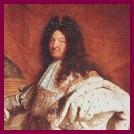 The French and the Italian styles were the two most important of the Baroque era. Contemporary music "critics" hotly debated the merits of each. Battle lines were drawn between the proponents of the graciously ornamented airs and subtle harmonies of French music, and those who preferred the more direct and dramatic Italian style. The confrontation comes once again to life in this vivid program featuring the most famous composers from this period: Fr.Couperin - J.Hotteterre - Forquerai - J.M.Leclair - D.Scarlatti - A.Corelli .
The French and the Italian styles were the two most important of the Baroque era. Contemporary music "critics" hotly debated the merits of each. Battle lines were drawn between the proponents of the graciously ornamented airs and subtle harmonies of French music, and those who preferred the more direct and dramatic Italian style. The confrontation comes once again to life in this vivid program featuring the most famous composers from this period: Fr.Couperin - J.Hotteterre - Forquerai - J.M.Leclair - D.Scarlatti - A.Corelli .
The Revival of the Recorder: 1930's - 1940's
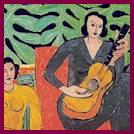 A program with the earliest 20th century literature for recorder and piano/harpsichord. All the works were premiered by Carl Dolmetsch during his yearly concerts in Wigmore Hall in London. He was a promoter of the recorder in general , and of contemporary recorder music in particular. The beautiful, tonal music produced in England dring the war years is more than worth a revival. Composers: Y.Bowen - E.Rubbra - W.Leigh - G.Holst - H.Genzmer - L.Berkeley.
A program with the earliest 20th century literature for recorder and piano/harpsichord. All the works were premiered by Carl Dolmetsch during his yearly concerts in Wigmore Hall in London. He was a promoter of the recorder in general , and of contemporary recorder music in particular. The beautiful, tonal music produced in England dring the war years is more than worth a revival. Composers: Y.Bowen - E.Rubbra - W.Leigh - G.Holst - H.Genzmer - L.Berkeley.
Prima Prattica - Secunda Prattica
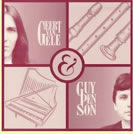 Around 1600 a musical earthquake hit Italy. The polyfonic music (prima prattica) which, with its strict rules of counterpoint and independent melodies, had ruled the musical scene for almost 300 years(!) was shaken to its foundations by the developing popularity of monody (seconda prattica). Monody, as advocated by Giulio Caccini in his Il Nuove Musiche, emphasized a much more direct connection between melody and text, and introduced the idea of "basso continuo" (a bass line whose function was to give harmonic support to the top melody). This seconda prattica, which laid the new foundations of baroque music, was admired for its emotionally expressive possibilities... and soon took the lead in the musical life of the period. These two divergent styles finally found their synthesis in the music of J.S. Bach. Music by O.Lassus - G.Gabrieli - G.P.da Palestrina - G.Caccini - G.Frescobaldi - B.Marini - J.S.Bach.
Around 1600 a musical earthquake hit Italy. The polyfonic music (prima prattica) which, with its strict rules of counterpoint and independent melodies, had ruled the musical scene for almost 300 years(!) was shaken to its foundations by the developing popularity of monody (seconda prattica). Monody, as advocated by Giulio Caccini in his Il Nuove Musiche, emphasized a much more direct connection between melody and text, and introduced the idea of "basso continuo" (a bass line whose function was to give harmonic support to the top melody). This seconda prattica, which laid the new foundations of baroque music, was admired for its emotionally expressive possibilities... and soon took the lead in the musical life of the period. These two divergent styles finally found their synthesis in the music of J.S. Bach. Music by O.Lassus - G.Gabrieli - G.P.da Palestrina - G.Caccini - G.Frescobaldi - B.Marini - J.S.Bach.